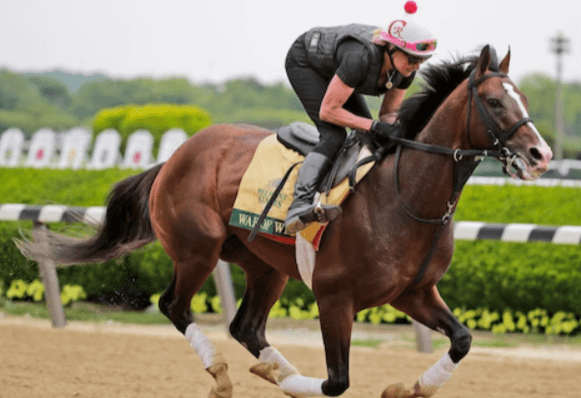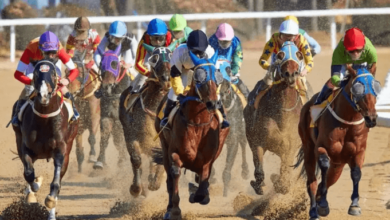What are the key differences in training a horse for flat racing versus jump racing?

Training a horse is a complex and nuanced process that varies significantly depending on the discipline for which the horse is being prepared. Two of the most popular and widely recognized types of horse racing are flat racing and jump racing. Although both sports involve racing horses over a set distance, the similarities largely end there. The differences in the training regimens for flat racing and jump racing are profound, with each discipline requiring specific skills, physical attributes, and mental conditioning from both the horse and rider. This article delves into these key differences, offering an in-depth exploration of the distinct training methodologies and strategies employed in each type of racing.
Understanding Flat Racing: An Overview
Flat racing is one of the oldest and most traditional forms of horse racing. It involves horses racing over a straight or oval track without obstacles, covering distances that typically range from five furlongs to two miles. The primary objective in flat racing is speed. The faster the horse, the better the chances of winning.
Focus on Speed and Agility
In flat racing, the emphasis is on speed, which necessitates a training program geared toward enhancing a horse’s quickness, agility, and endurance over shorter distances. Horses bred for flat racing, often Thoroughbreds, are known for their slender bodies, long legs, and explosive speed.
Intensive Speed Workouts
The training regimen for flat racing includes a significant amount of sprint work to build up the horse’s fast-twitch muscle fibers. These workouts are designed to increase the horse’s maximum speed, as well as its ability to maintain that speed for the duration of the race. Interval training, where the horse alternates between bursts of speed and periods of rest, is commonly used to develop both speed and stamina.
Weight Management and Conditioning
Another critical aspect of training for flat racing is weight management. Jockeys must maintain a low body weight to minimize the load on the horse, and the horse’s own weight is carefully monitored to ensure optimal performance. Trainers focus on conditioning the horse to be lean and muscular, striking the perfect balance between strength and lightness.
Psychological Conditioning
Flat racing horses are also subjected to psychological conditioning to help them remain calm and focused under the intense pressure of race day. This involves exposing the horse to various stimuli, such as crowds, noise, and the starting gate, to desensitize them and reduce anxiety.
Understanding Jump Racing: An Overview
Jump racing, also known as National Hunt racing in the UK, is another popular form of horse racing that involves horses navigating a series of obstacles, such as fences, ditches, and hurdles, over longer distances. Jump races are generally more demanding and can cover distances of up to four miles or more.
Emphasis on Stamina and Endurance
Unlike flat racing, jump racing places a premium on stamina and endurance. The distances involved are often much longer, and the presence of obstacles adds an additional layer of complexity. Horses need to maintain their energy over a more extended period while also possessing the agility to clear jumps.
Jumping Techniques and Training
Training for jump racing includes a strong focus on teaching the horse how to approach, take off, and land over jumps efficiently and safely. This requires a combination of strength, balance, and timing, all of which are honed through specific jumping exercises and drills. Horses are often trained over smaller jumps initially, gradually progressing to the larger and more challenging obstacles they will encounter in actual races.
Building Resilience and Toughness
Jump racing horses are trained to be resilient and tough. The rigorous nature of the sport, with its combination of distance and obstacles, means that these horses must be in peak physical condition to avoid injuries. Trainers often incorporate long, slow distance work to build cardiovascular endurance and strengthen the horse’s tendons and ligaments.
Focus on Mental Toughness
Mental toughness is another crucial component in training a horse for jump racing. The unpredictability of jump racing, with its varying terrain and obstacles, requires a horse that can remain focused, adaptable, and confident throughout the race. Trainers work on building the horse’s confidence by gradually increasing the difficulty of the training sessions and exposing the horse to a variety of race-like conditions.
Comparing Physical Conditioning in Flat Racing and Jump Racing
The physical conditioning required for flat racing and jump racing differs significantly due to the nature of each sport. While flat racing demands peak speed and quick bursts of energy, jump racing requires sustained stamina and the ability to recover quickly after each jump.
Muscle Development
Flat racing horses focus on developing fast-twitch muscle fibers, which are responsible for short, explosive movements. This is achieved through sprint work and high-intensity interval training. In contrast, jump racing horses need to develop slow-twitch muscle fibers, which support endurance and the ability to maintain a steady pace over long distances.
Cardiovascular Fitness
Cardiovascular fitness is essential in both disciplines, but the approach differs. Flat racing horses undergo shorter, more intense workouts designed to improve their cardiovascular efficiency for sprinting. Jump racing horses, on the other hand, require longer, more moderate workouts that build endurance and ensure they can sustain their performance over extended distances.
Injury Prevention
Injury prevention strategies also differ between the two disciplines. Flat racing horses are prone to injuries related to high-speed impacts and the intense demands placed on their legs. As a result, trainers focus on exercises that strengthen the horse’s legs and joints, as well as ensuring the horse’s body is in peak condition to handle the rigors of high-speed racing. Jump racing horses, while also susceptible to leg injuries, face additional risks due to the jumping component. Their training emphasizes not only leg strength but also flexibility and balance to help the horse navigate obstacles safely.
Diet and Nutrition: Tailoring to the Discipline
Diet and nutrition play a vital role in the training of both flat racing and jump racing horses, but the requirements differ based on the demands of each discipline.
High-Energy Diet for Flat Racing
Flat racing horses require a diet that provides high energy to support their explosive speed. This typically includes a higher proportion of grains, such as oats, barley, and corn, which are rich in carbohydrates. The goal is to provide the horse with the quick energy needed to perform short, intense bursts of speed.
Balanced Diet for Endurance in Jump Racing
Jump racing horses, on the other hand, need a more balanced diet that supports endurance. Their diet includes a mix of carbohydrates for energy, along with fats and proteins to sustain their longer, more demanding races. Fiber is also essential to maintain digestive health during prolonged exertion. Additionally, electrolytes are vital in jump racing to prevent dehydration and ensure the horse can maintain peak performance over longer distances.
Supplements and Hydration
Both flat and jump racing horses may receive supplements to support their training. However, the focus differs: flat racing horses might receive supplements aimed at boosting energy and muscle recovery, while jump racing horses might benefit more from supplements that support joint health and endurance. Hydration is also critical, particularly in jump racing, where the longer race distances increase the risk of dehydration.
Differences in Rider Training and Strategy
The role of the rider, whether a jockey in flat racing or a jump jockey in jump racing, is pivotal in determining the outcome of a race. However, the skills and strategies required differ significantly between the two disciplines.
Flat Racing: Precision and Timing
In flat racing, the jockey’s primary focus is on maintaining an optimal position throughout the race and timing the horse’s final sprint perfectly. Jockeys must have an acute sense of pace and be able to gauge when to push their horse to its maximum speed. They also need to be light and agile, reducing the load on the horse to help it maintain speed.
Jump Racing: Adaptability and Tactics
Jump jockeys, in contrast, must be adaptable and possess a deep understanding of how to navigate obstacles effectively. They need to be able to judge the approach to each jump, adjust the horse’s stride, and position themselves to help the horse clear the obstacle without losing momentum. The longer race distance also means that jump jockeys must have a keen sense of pacing and energy management, ensuring the horse has enough stamina left for the final stages of the race.
Communication with the Horse
In both disciplines, effective communication between the rider and the horse is crucial. However, jump racing requires an even greater level of trust and understanding, as the horse relies on the rider’s cues to navigate the complex terrain and obstacles. Riders in jump racing often spend more time working with their horses outside of formal training sessions to build this bond and improve communication.
Training Facilities and Environment
The training environment for flat racing and jump racing also differs, reflecting the specific needs of each discipline.
Flat Racing Tracks
Flat racing horses are typically trained on flat tracks that mimic the conditions of actual racecourses. These tracks are designed to be smooth and even, allowing horses to reach their maximum speed. The facilities often include starting gates, which are used to train horses to break quickly and cleanly at the start of a race.
Jump Racing Courses
Jump racing horses, on the other hand, are trained on courses that include a variety of obstacles similar to those found in actual races. These training courses are often more varied in terrain, including hills, ditches, and different types of jumps. This environment helps prepare the horse for the challenges it will face during a race, including how to handle uneven ground and changing conditions.
Psychological Conditioning and Race Day Preparation
Psychological conditioning is an essential aspect of training in both flat racing and jump racing, but the approaches differ based on the nature of each sport.
Flat Racing: Focus and Composure
Flat racing horses are trained to be highly focused and composed, especially during the high-pressure moments of a race. This involves desensitization training, where the horse is gradually exposed to the sights and sounds of race day, such as large crowds, loud noises, and the starting gate. The goal is to ensure the horse remains calm and focused, able to execute its race strategy without becoming overly stressed or anxious.
Jump Racing: Confidence and Resilience
Jump racing horses require confidence and resilience, both in themselves and in their riders. Training focuses on building the horse’s confidence in its ability to navigate obstacles and recover from mistakes. This is achieved through repeated exposure to challenging training scenarios, where the horse learns to trust its instincts and the guidance of its rider. Mental resilience is also crucial, as the unpredictable nature of jump racing means that horses must be able to adapt quickly to changing conditions and recover from any errors or mishaps.
Common Injuries and Prevention in Flat and Jump Racing
Injuries are a concern in both flat racing and jump racing, but the types of injuries and prevention strategies vary.
Flat Racing Injuries
In flat racing, the most common injuries are related to the high speeds and intense physical demands of the sport. These can include fractures, tendon strains, and muscle tears. Prevention strategies focus on conditioning the horse’s muscles and tendons to handle the stress of racing, as well as careful monitoring of the horse’s health to detect any early signs of injury.
Jump Racing Injuries
Jump racing horses are at risk of injuries related to jumping, such as falls, fractures, and ligament tears. The additional strain of navigating obstacles can also lead to injuries in the joints and back. Prevention involves thorough conditioning of the horse’s body to handle the impact of jumps, as well as ensuring the horse has the correct technique and confidence to approach jumps safely.
Training Schedules: Flat Racing Versus Jump Racing
The training schedules for flat racing and jump racing reflect the different demands of each sport.
Flat Racing Training Schedule
A flat racing horse’s training schedule is typically intense, with frequent short, high-intensity workouts. These sessions focus on building speed and refining race strategy. Training often includes sprint work, interval training, and practice starts. Horses may also be given rest days to recover from the physical demands of training.
Jump Racing Training Schedule
Jump racing horses have a more varied training schedule, which includes longer, endurance-building sessions as well as specific jump training. These horses might train on a variety of terrains and practice different types of jumps to prepare for the range of obstacles they will encounter in a race. The training schedule also includes rest and recovery periods to ensure the horse remains in peak condition without overtraining.
Choosing the Right Horse for Each Discipline
The selection of a horse for flat racing versus jump racing is critical, as each discipline requires different physical and mental attributes.
Flat Racing Horse Selection
For flat racing, the ideal horse is typically a Thoroughbred with a lean, muscular build, long legs, and a natural aptitude for speed. These horses are selected based on their pedigree, with an emphasis on breeding lines known for producing fast, agile racers.
Jump Racing Horse Selection
In contrast, jump racing horses are often chosen for their endurance, strength, and jumping ability. These horses might be slightly heavier and more robust than their flat racing counterparts, with a strong, compact build that supports the demands of jumping. Pedigree is also important, but trainers may place greater emphasis on the horse’s temperament and willingness to learn and adapt.
FAQs
What is the primary difference between flat racing and jump racing? The primary difference is that flat racing focuses on speed over short distances on a level track, while jump racing involves navigating obstacles over longer distances, requiring stamina and jumping ability.
How does training differ for flat racing and jump racing? Training for flat racing emphasizes speed, agility, and quick bursts of energy, while jump racing training focuses on stamina, endurance, and the ability to jump efficiently.
Are the horses used in flat racing the same as those in jump racing? No, flat racing horses are usually leaner and built for speed, while jump racing horses are more robust, with the strength and stamina needed for jumping and covering longer distances.
What kind of diet do flat racing horses need compared to jump racing horses? Flat racing horses require a high-energy diet rich in carbohydrates to support their speed, while jump racing horses need a balanced diet with enough energy, fats, and proteins to sustain their endurance.





